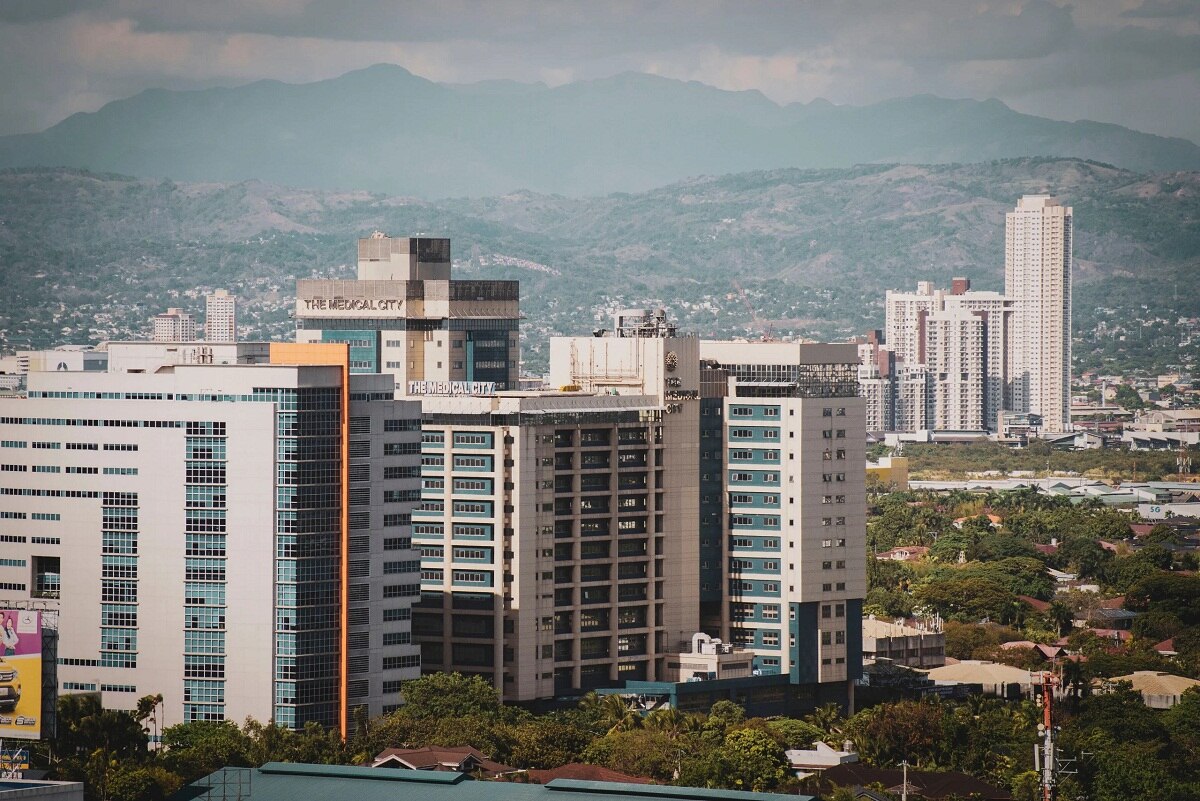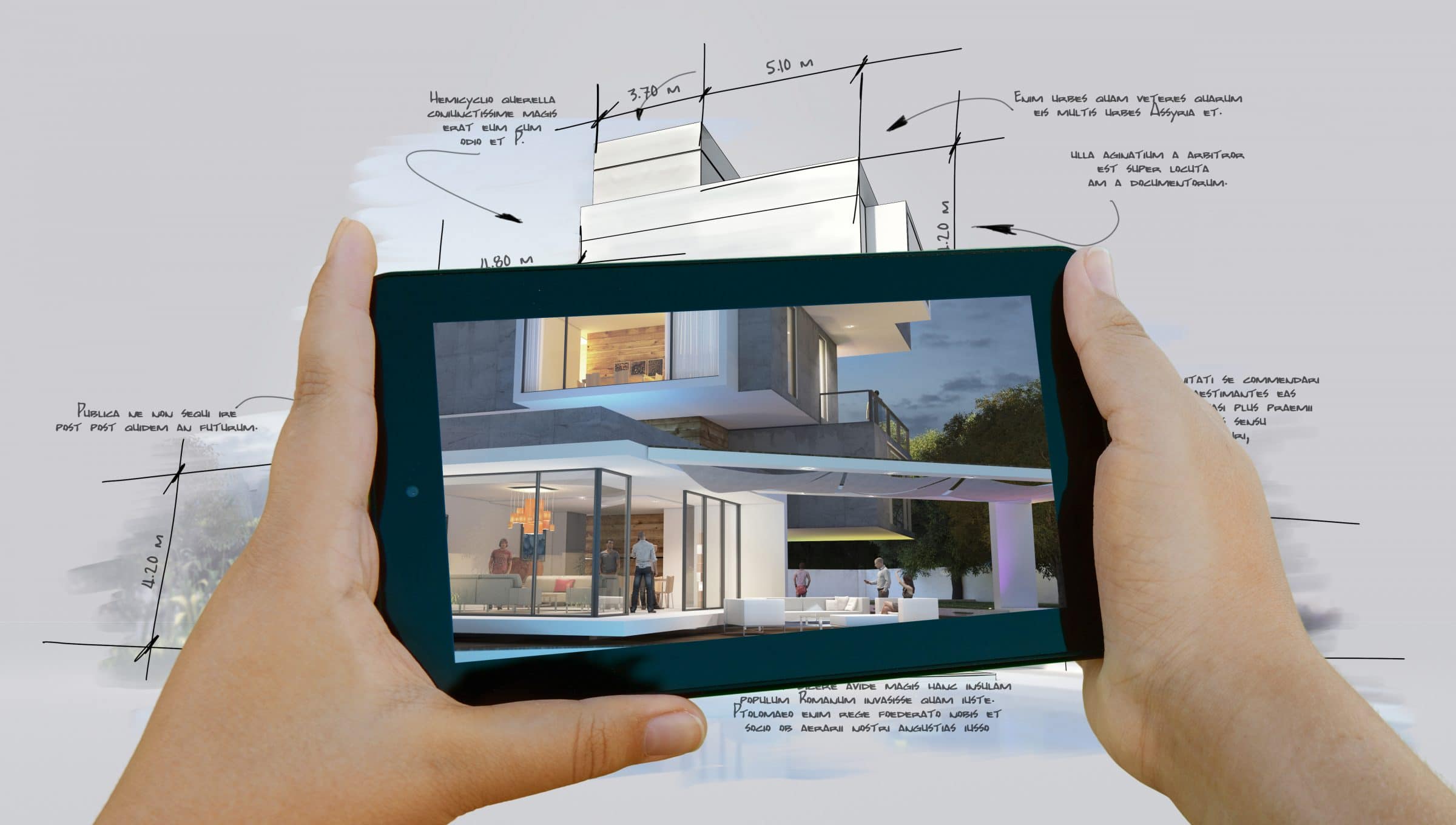Home>diy>Planning & Engineering>Why Urban Planning Is Important


Planning & Engineering
Why Urban Planning Is Important
Modified: August 16, 2024
Discover the significance of urban planning in the field of planning engineering. Explore the benefits and role of urban planning in shaping sustainable cities.
(Many of the links in this article redirect to a specific reviewed product. Your purchase of these products through affiliate links helps to generate commission for Storables.com, at no extra cost. Learn more)
Introduction
Urban planning plays a crucial role in shaping the development and growth of cities and towns. It is a multidisciplinary field that combines aspects of architecture, engineering, social sciences, and environmental planning to create well-designed, sustainable, and livable communities. The importance of urban planning cannot be overstated, as it influences various aspects of our daily lives, from transportation and infrastructure to public health and social equity.
With the rapid urbanization happening worldwide, effective urban planning becomes even more critical. As cities and towns expand and their populations grow, efficient use of resources, environmental sustainability, and social equity become key factors in creating vibrant and inclusive communities. Urban planning helps to address these challenges and provides a roadmap for sustainable development.
This article will delve into the importance of urban planning and the various benefits it brings to our cities and towns. From enhancing the quality of life to promoting social equity and improving public health, urban planning plays a pivotal role in shaping our urban environments.
Key Takeaways:
- Urban planning enhances quality of life by creating safe, convenient, and inclusive communities through thoughtful design, access to amenities, and promotion of physical and mental well-being.
- Urban planning addresses population growth, resource allocation, environmental sustainability, social equity, public health, mobility, and community vibrancy, shaping cities for long-term sustainability and resilience.
Read more: What Is An Urban Planning Degree
Enhancing Quality of Life
One of the primary aims of urban planning is to enhance the quality of life for residents. By carefully designing neighborhoods, public spaces, and amenities, urban planning seeks to create communities that are safe, comfortable, and enjoyable to live in.
Through the development of parks, green spaces, and recreational facilities, urban planning provides opportunities for physical activity, leisure, and social interaction. These spaces contribute to a sense of community and promote a healthy lifestyle. Additionally, well-designed streets and sidewalks, complete with proper lighting and accessible infrastructure, create a safe environment for pedestrians and cyclists.
Furthermore, urban planning encourages mixed-use development, where residential areas are integrated with commercial and retail spaces. This approach fosters walkability and reduces the need for long commutes, improving the overall convenience and quality of life for residents.
Effective urban planning also takes into consideration factors such as noise reduction, air quality improvement, and access to essential services like healthcare and education. By addressing these elements, urban planners strive to create neighborhoods that promote physical and mental well-being.
Overall, urban planning plays a crucial role in enhancing the quality of life for residents by creating well-designed communities that prioritize safety, health, and convenience.
Managing Population Growth
With rapid urbanization and population growth, managing the influx of people into cities has become a significant challenge. Urban planning helps to address this challenge by strategically managing population growth and ensuring that cities are equipped to handle increased demands.
One of the ways urban planning manages population growth is through land use planning. By carefully allocating land for different purposes, such as residential, commercial, and industrial, urban planners can create a balanced and efficient use of space. This helps prevent overcrowding and ensures the availability of essential facilities and services.
Additionally, urban planning focuses on the development of transportation infrastructure. Efficient transportation systems, including roads, public transit, and cycling lanes, are essential for smooth movement of people within cities. By expanding and improving transportation options, urban planners aim to reduce congestion and provide convenient and accessible transportation for all residents.
Urban planning also addresses the need for affordable housing. With population growth, the demand for housing increases, often leading to rising housing costs. Through various strategies, such as incentivizing the development of affordable housing units and implementing regulations for inclusionary housing, urban planning aims to provide housing options that are accessible and affordable for all segments of the population.
By proactively managing population growth, urban planning ensures that cities are prepared to accommodate the needs of a growing population while maintaining a high quality of life for residents.
Efficient Resource Allocation
Urban planning plays a vital role in efficiently allocating scarce resources within cities. With the increasing demands for energy, water, and land, it is crucial to manage these resources effectively to ensure their sustainable availability for current and future generations.
One aspect of efficient resource allocation is energy planning. Urban planners work to promote energy-efficient designs and technologies in buildings, transportation systems, and infrastructure. This includes implementing green building standards, encouraging the use of renewable energy sources, and improving energy efficiency in public spaces. By doing so, urban planning reduces energy consumption, lowers greenhouse gas emissions, and helps mitigate the impact of climate change.
In terms of water management, urban planning focuses on sustainable water use and conservation. This involves measures such as stormwater management systems that reduce runoff and promote water infiltration, as well as the development of water recycling and reuse programs. By incorporating efficient water management strategies, urban planners can ensure a sustainable water supply and minimize environmental impacts.
Efficient land use planning is another key element of resource allocation. Urban planners strive to maximize the use of available land by promoting compact and mixed-use development. This approach reduces urban sprawl, preserves open spaces and agricultural land, and minimizes the need for long commutes, thus reducing energy consumption and transportation-related emissions.
Furthermore, urban planning plays a role in waste management. Through the implementation of recycling programs, waste reduction campaigns, and the development of sustainable waste treatment facilities, urban planners help manage and minimize the impact of waste on the environment.
Overall, efficient resource allocation through urban planning ensures the sustainable use of energy, water, and land, contributing to the long-term viability and resilience of cities.
Environmental Sustainability
Environmental sustainability is a critical aspect of urban planning. As cities are responsible for a significant portion of global greenhouse gas emissions and environmental degradation, urban planning plays a vital role in reducing their environmental footprint and promoting sustainable practices.
One of the key ways urban planning promotes environmental sustainability is through the development of green infrastructure. This includes the integration of parks, gardens, and urban forests into city landscapes. Green spaces not only enhance the aesthetic value of cities but also provide numerous environmental benefits. They improve air quality, reduce urban heat islands, mitigate stormwater runoff, and provide habitats for wildlife.
Additionally, urban planners focus on promoting sustainable transportation options. This includes developing comprehensive public transit systems, promoting cycling and pedestrian-friendly infrastructure, and encouraging the use of electric vehicles. By reducing reliance on private cars, urban planning helps to lower emissions, reduce congestion, and improve air quality.
Furthermore, urban planning incorporates sustainable building and design practices. This includes the adoption of green building standards, such as LEED certification, which promote energy efficiency, water conservation, and the use of environmentally friendly materials. Urban planners also encourage the retrofitting and rehabilitation of existing buildings to improve their energy performance and reduce waste.
Urban planning also considers climate change adaptation and resilience strategies. As the impacts of climate change become more apparent, cities need to be prepared for extreme weather events and rising sea levels. Urban planners work to develop strategies that protect vulnerable areas, promote sustainable land use practices, and integrate climate change considerations into development plans.
By integrating environmental sustainability into urban planning, cities can become more resilient, reduce their ecological footprint, and provide healthier and more sustainable living environments for their residents.
When discussing why urban planning is important, emphasize the role it plays in creating sustainable, livable, and equitable communities. Urban planning helps to manage growth, preserve natural resources, and improve quality of life for residents.
Promoting Social Equity
Urban planning plays a crucial role in promoting social equity within cities. It strives to create inclusive communities where all residents, regardless of their socio-economic background, have equal access to essential services, amenities, and opportunities.
One way urban planning addresses social equity is through affordable housing policies. By implementing regulations and incentives for the development of affordable housing units, urban planners ensure that housing is accessible to individuals of diverse income levels. This helps prevent segregation and promotes diversity within neighborhoods.
Furthermore, urban planning aims to create mixed-use developments that incorporate a variety of housing types, including affordable and market-rate housing. This approach fosters socioeconomic diversity within communities, promotes social integration, and helps reduce disparities between different income groups.
Urban planning also takes into consideration accessibility for all residents, including those with disabilities and limited mobility. This includes designing streets and buildings that are accessible and providing amenities such as wheelchair ramps, tactile paving, and accessible public transportation. By ensuring equal access to public spaces and services, urban planners promote inclusivity and social equity.
Additionally, urban planning addresses the provision of essential services and amenities in underserved neighborhoods. By strategically locating schools, healthcare facilities, community centers, and recreational spaces in areas that lack these resources, urban planners help bridge the gap in access to vital services and opportunities.
Moreover, urban planning promotes social equity through community engagement and participation. By involving residents in the decision-making process and considering their needs and aspirations, urban planners can create spaces and policies that are reflective of the community’s diverse perspectives. This participatory approach fosters a sense of ownership and belonging among residents, creating a more inclusive and equitable urban environment.
By promoting social equity, urban planning aims to create cities where all residents have equal access to opportunities, services, and a high quality of life, regardless of their socioeconomic background or circumstances.
Improving Public Health
Urban planning plays a significant role in improving public health by creating environments that support physical and mental well-being. By considering factors such as access to healthcare, walkability, and green spaces, urban planners can greatly influence the health outcomes of residents.
One way urban planning improves public health is through the development of healthcare infrastructure. By strategically locating hospitals, clinics, and other healthcare facilities, urban planners ensure that residents have easy access to healthcare services. This reduces travel time and increases the likelihood of seeking timely medical care.
Additionally, urban planning promotes walkability and physical activity, which is crucial for maintaining good health. By designing neighborhoods with well-connected sidewalks, bike lanes, and parks, urban planners encourage residents to engage in physical exercise, leading to lower rates of obesity, heart disease, and other chronic conditions.
Urban planning also prioritizes the creation of green spaces, such as parks and gardens, within cities. These green areas provide opportunities for relaxation, recreation, and connection with nature, which have been shown to improve mental health and reduce stress levels.
Furthermore, urban planning considers the impact of the built environment on air and water quality. By implementing measures to reduce pollution, such as promoting the use of clean energy sources, encouraging public transportation, and managing stormwater runoff, urban planners contribute to cleaner and healthier environments.
Another aspect of public health that urban planning addresses is the provision of healthy food options. By encouraging the development of farmers’ markets, community gardens, and grocery stores in underserved areas, urban planners help increase access to fresh and nutritious food, reducing the prevalence of food deserts and improving dietary choices.
By integrating public health considerations into urban planning, cities can create environments that support healthier lifestyles, reduce health disparities, and enhance the overall well-being of their residents.
Enhancing Mobility and Connectivity
Urban planning plays a crucial role in enhancing mobility and connectivity within cities. By developing sustainable transportation systems and efficient infrastructure, urban planners aim to improve the movement of people and goods, reduce congestion, and increase accessibility for all residents.
One of the key objectives of urban planning is to promote alternative modes of transportation. This includes developing comprehensive public transit networks, such as buses, trains, and light rail systems, that provide affordable and convenient options for residents. By prioritizing public transportation, urban planners aim to reduce congestion, lower emissions, and improve air quality.
Urban planners also strive to create walkable and bike-friendly communities. This involves designing streets, sidewalks, and bike lanes that are safe, accessible, and well-connected. By creating pedestrian-friendly environments, urban planners encourage residents to walk or bike as a means of transportation, promoting active lifestyles and reducing reliance on cars.
Furthermore, urban planning focuses on creating transportation hubs and intermodal connections. By integrating different modes of transportation, such as buses, trains, and bicycles, urban planners facilitate seamless transfers and improve connectivity within a city and its surrounding areas. This not only enhances mobility but also promotes multi-modal commuting, allowing residents to choose the most efficient and sustainable transportation options for their needs.
Urban planning also considers the needs of vulnerable populations, such as the elderly and people with disabilities. By implementing universal design principles and ensuring accessibility in transportation systems, urban planners create environments that are inclusive and enable equal mobility for all residents.
Moreover, urban planning addresses the issue of efficient and strategic infrastructure development. By carefully planning the location and design of roads, bridges, and tunnels, urban planners aim to optimize traffic flow and reduce congestion. This improves overall efficiency and connectivity within a city, enhancing mobility for both residents and businesses.
By prioritizing sustainable transportation options, promoting walkability, and improving infrastructure, urban planning enhances mobility and connectivity within cities, creating efficient transportation systems and improving the overall quality of life for residents.
Creating Vibrant and Livable Communities
Urban planning plays a critical role in creating vibrant and livable communities that foster social interaction, cultural diversity, and a sense of belonging. By considering factors such as urban design, public spaces, and community engagement, urban planners contribute to the creation of thriving and inclusive neighborhoods.
One way urban planning creates vibrant communities is through thoughtful urban design. By incorporating elements such as mixed-use developments, diverse building designs, and aesthetically pleasing streetscapes, urban planners contribute to the visual appeal and character of a neighborhood. This not only enhances the overall ambiance and attractiveness of an area but also encourages people to engage with their surroundings and feel a sense of pride in their community.
Urban planning also emphasizes the importance of public spaces. By providing well-designed parks, plazas, and gathering spaces, urban planners create opportunities for social interaction, recreation, and community events. These public spaces serve as meeting points for residents, promote a sense of community, and contribute to the overall liveliness of a neighborhood.
Furthermore, urban planning fosters cultural diversity and inclusivity. By promoting mixed-income housing, supporting the development of cultural institutions, and encouraging the establishment of community centers, urban planners create environments that celebrate different backgrounds, promote social cohesion, and provide opportunities for residents to engage in cultural activities.
Community engagement is another key aspect of creating vibrant and livable communities. Urban planners actively involve residents in the decision-making process through public consultations, workshops, and community forums. This participatory approach allows residents to have a voice in shaping their neighborhoods, fostering a sense of ownership and empowerment.
In addition, urban planners recognize the importance of access to amenities and services. By strategically locating schools, healthcare facilities, libraries, and retail spaces within neighborhoods, urban planners ensure that residents have easy access to essential resources that contribute to a high quality of life.
By considering urban design, public spaces, cultural diversity, community engagement, and access to amenities, urban planning plays a crucial role in creating vibrant and livable communities that residents are proud to call home.
Read more: What Does An Urban Planning Engineer Do
Conclusion
Urban planning is a fundamental tool for designing and shaping cities in a way that promotes sustainability, equity, and livability. Through its multidisciplinary approach, urban planning addresses various aspects of urban development, including enhancing quality of life, managing population growth, efficiently allocating resources, promoting environmental sustainability, fostering social equity, improving public health, enhancing mobility and connectivity, and creating vibrant and livable communities.
By prioritizing these objectives, urban planning creates communities that are safe, inclusive, and environmentally conscious. It considers factors such as access to amenities, transportation options, affordable housing, public spaces, and cultural diversity. Urban planners work to balance the needs and aspirations of residents, while also ensuring long-term sustainability and resilience in the face of urban challenges.
Effective urban planning improves the quality of life for residents by creating well-designed neighborhoods that prioritize safety, health, and convenience. It manages population growth by strategically allocating land and developing transportation infrastructure. Urban planning also focuses on efficient resource allocation, promoting environmental sustainability through green infrastructure, sustainable transportation, and energy and water conservation measures.
Social equity is another important aspect of urban planning, as it ensures that all residents have equal access to amenities, services, and opportunities. By addressing issues such as affordable housing, accessibility, and community engagement, urban planning helps bridge the gap between different socioeconomic groups.
Urban planning also plays a crucial role in public health by creating environments that support physical activity, access to healthcare, and a clean and healthy living environment. It enhances mobility and connectivity by promoting alternative modes of transportation, designing walkable communities, and improving infrastructure.
Moreover, urban planning contributes to the creation of vibrant and livable communities by emphasizing urban design, public spaces, cultural diversity, and community engagement. This fosters a sense of belonging, social interaction, and pride among residents, making cities more vibrant and inclusive.
In conclusion, urban planning is a powerful tool for designing and shaping cities in a way that considers the needs of residents, promotes sustainability, and creates vibrant and livable communities. It is a collaborative and ongoing process that requires input from various stakeholders, including community members, policymakers, and urban planners, to ensure the long-term success and prosperity of our cities.
Frequently Asked Questions about Why Urban Planning Is Important
Was this page helpful?
At Storables.com, we guarantee accurate and reliable information. Our content, validated by Expert Board Contributors, is crafted following stringent Editorial Policies. We're committed to providing you with well-researched, expert-backed insights for all your informational needs.














0 thoughts on “Why Urban Planning Is Important”